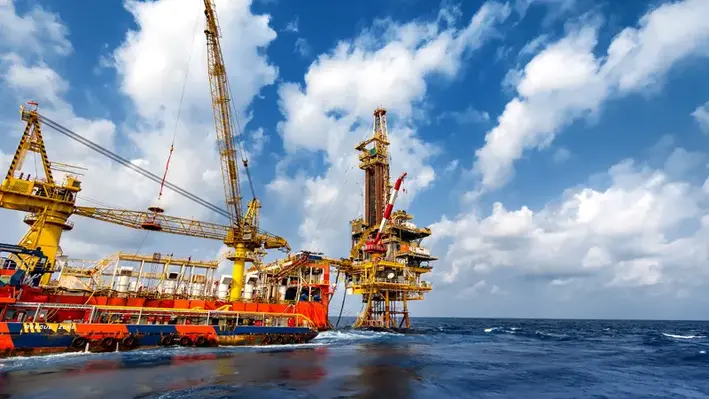
 Two substantial platforms in the Gulf of America were subjected to comprehensive full-cycle offshore decommissioning campaigns by MC Offshore Petroleum, which also advanced environmental stewardship.
Two substantial platforms in the Gulf of America were subjected to comprehensive full-cycle offshore decommissioning campaigns by MC Offshore Petroleum, which also advanced environmental stewardship.
A multi-asset operation, the campaign involved the retirement of the Jolliet Tension Leg Well Platform (TLWP) in Green Canyon Block 184 and the fixed production infrastructure at Marquette comprising a production platform, GC52A, and a processing platform, GC52CPP, in Green Canyon Block 52. These will be further converted into an artificial reef in Green Canyon Block 52.
When installed as the first TLWP in the Gulf of America, Jolliet came to be known as the world's deepest floating production unit at the time of installation. The current campaign honours the platform's legacy while establishing a model for the next generation of offshore decommissioning excellence.
Right from the planning stage in 2022, MCOP has followed a strategy to execute the removals ahead of the peak months of hurricane season. The final decision to begin decommissioning operation was made in the first quarter of 2024. Decommissioning operations, along with the plug and abandonment of all wells on GC 52-A (Marquette) and GC 184 (Jolliet), were set to begin with an execution team in place by the second quarter of 2024.
With the well P&A work underway, pipeline abandonment operations begun as three pipelines were flushed and abandoned. The project team also abandoned another 24-mile pipeline belonging to a midstream operator that originated at GC52.
The decommissioning of the Jolliet TLWP and removal of GC52A and GCS2CPP was made possible with high-level engineering work. Disconnecting the TLWP tendons from the template, ballasting the JOLLIET TLWP during tendon removals and towing the platform to Port Aransas were backed by extensive planning.
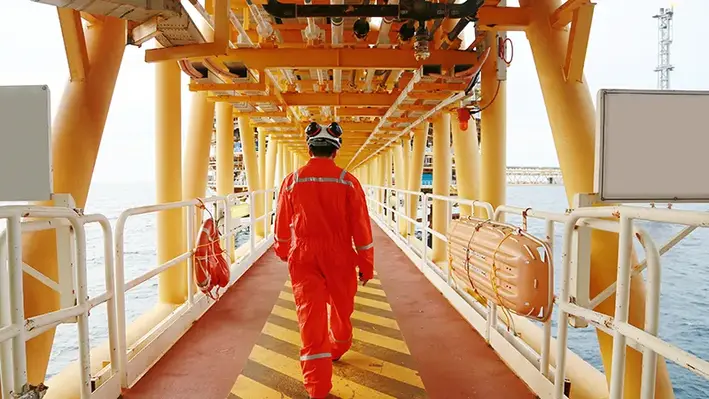
 The Institute for Energy Economics and Financial Analysis (IEEFA) has published its responses to the Victorian Legislative Council Environment and Planning Committee and its inquiry into the decommissioning of oil and gas infrastructure.
The Institute for Energy Economics and Financial Analysis (IEEFA) has published its responses to the Victorian Legislative Council Environment and Planning Committee and its inquiry into the decommissioning of oil and gas infrastructure.
IEEFA is an independent energy finance think tank that examines issues related to energy markets, trends and policies.
The Institute’s mission is to accelerate the transition to a diverse, sustainable and profitable energy economy.
In a statement published on its website, IEEFA noted that Victoria is in a “unique position” to establish a decommissioning industry, given the state has some of the oldest oil and gas extraction infrastructure in Australia “and therefore has a greater proportion of its property and equipment ready for decommissioning.”
It also called on the Victorian government to ensure decommissioning work is undertaken in an orderly and transparent manner.
“This will help to keep cost downs and provide opportunities for the state’s oil and gas workforce and contractors to move into the next phase of oil and gas lifecycle, decommissioning.
Victoria’s decommissioning asset profile includes 22 platforms, over 2,000 km of pipelines and umbilicals, as well as around 460 wells to be plugged and abandoned, according to the National Offshore Petroleum Safety and Environmental Management Authority (Nopsema).
The infrastructure earmarked for decommissioning offshore Victoria is owned and operated by a handful of companies.
Historically, the largest oil and gas producing complex is the Gippsland Basin Joint Venture (GBJV), also known as the Bass Strait project. This year, Woodside took over as operator of the venture from ExxonMobil, which had operated the project since 1969.
Other companies with decommissioning liabilities offshore Victoria include Beach Energy and Amplitude Energy.

 Last week the industry’s finest gathered in Aberdeen to see who will be crowned this year’s well intervention champions!
Last week the industry’s finest gathered in Aberdeen to see who will be crowned this year’s well intervention champions!
The annual celebration saw a panel of expert judges acknowledge the very best in global well intervention excellence.
This year’s winners included:
A huge congratulations to all the winners and nominees, and a big thank you to everybody who attended! We look forward to another year of seeing this industry push boundaries and drive the wider offshore community into the future.
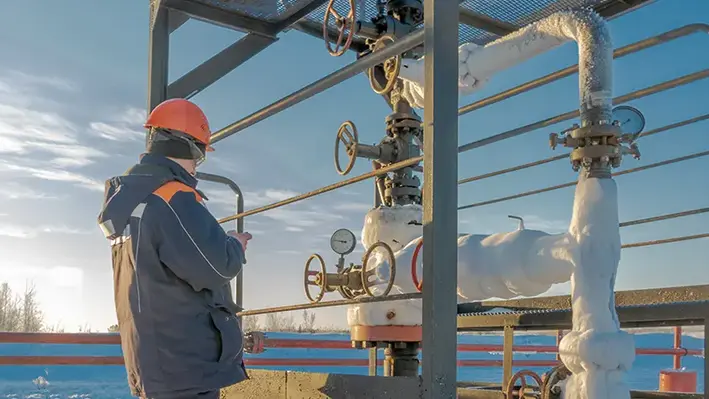
 Archer Limited will be delivering a P&A unit, which is much lighter than usual, for the Fulmar platform in North Sea.
Archer Limited will be delivering a P&A unit, which is much lighter than usual, for the Fulmar platform in North Sea.
The unit will be deployed as part of an additional contract linked to a five-year agreement with Neo Next Energy.
While the P&A unit will be replacing one of Archer’s modular drilling rigs, the expanded scope of the new contract will cover platform drilling, facilities engineering, coil tubing, wireline services, and downhole well service technologies across Neo Next’s offshore portfolio. This portfolio includes integrated drilling and well services for late-life operations and P&A activities for approximately 130 wells, requiring safe and cost-effective project delivery.
Alexander Olsson, EVP Platform Operations Archer, said, “We are very pleased with this contract award as this anchors our strategic focus on late life and P&A operations. This amendment reflects our ability to grow long-term client relationships by delivering value through operational excellence and innovative solutions. Archer’s capabilities to offer lighter, leaner and more cost-efficient P&A units, is a competitive advantage as the demand for cost efficient P&A programmes grow. We are proud to extend our collaboration with NEO NEXT in this area.”
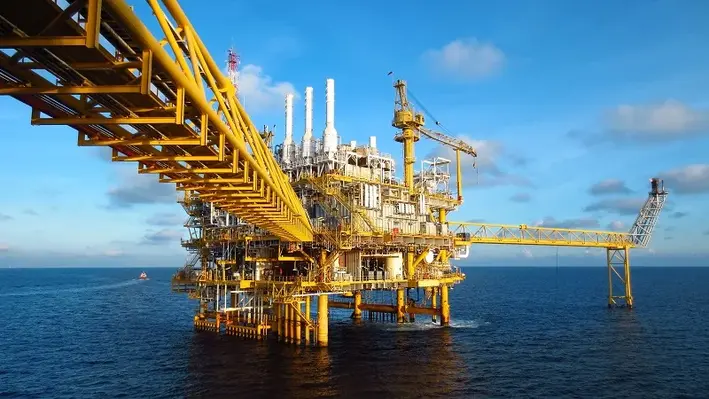
 In an article on the ASCO website, John Davidson, Operations Manager – Environmental Services, ASCO discusses how the UK’s experience of building a system to deal with Naturally Occurring Radioactive Material (NORM) can benefit Australia.
In an article on the ASCO website, John Davidson, Operations Manager – Environmental Services, ASCO discusses how the UK’s experience of building a system to deal with Naturally Occurring Radioactive Material (NORM) can benefit Australia.
Davidson points out that as Australia faces a massive decommissioning wave, dealing with NORM will be one of the challenges it will need to address. This residue, which builds up in pipework, tanks and separators over years of oil and gas production, carries radiological risks and requires expert handling, treatment and disposal.
In the UK, the oil and gas sector has been dealing with NORM for decades, although the early years were challenging, he notes. “But through trial and error, the UK built a system that now works,” he says.
“NORM processing was centralised. Long-distance, highly regulated transport systems were developed. Experienced specialists were embedded into local teams. Most importantly, collaboration gradually replaced competition. Today, the UK has one of the most mature decommissioning supply chains in the world.”
Australia has a chance to avoiding years of inefficiency and unnecessary cost by learning lessons from the UK experience, he suggests. ASCO, which has built and operated one of the world’s most advanced NORM facilities in the North Sea, can now transfer that knowledge directly into Australia.
He goes on to suggest that a logistics strategy to deal with the long distances of offshore assets from disposal sites needs to be put in place; the expertise of experienced specialists should be leveraged at an early stage; and collaboration between companies should be encouraged, with shared infrastructure, expertise and logistics creating efficiencies and helping to address gaps in local capabilities.
On the questions of regulation, he notes that UK authorities engaged closely with industry to co-develop standards and best practice. “The UK’s lesson is clear: proactive engagement builds trust, accelerates approvals and avoids gridlock.”
“If Australia can absorb the lessons above now, rather than repeat the UK’s early missteps, it has the opportunity to build one of the world’s most resilient and effective decommissioning supply chains,” he concludes.
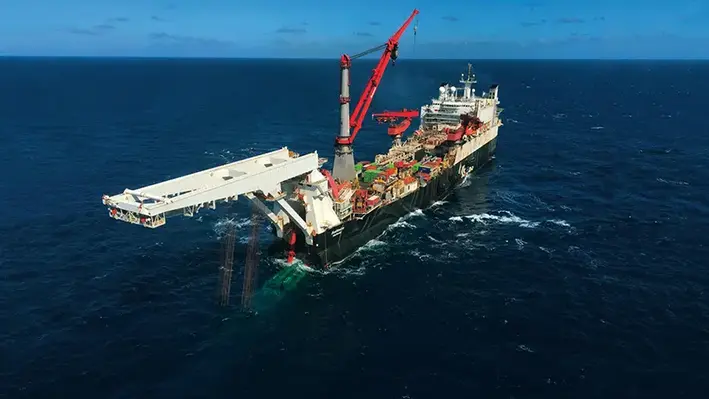
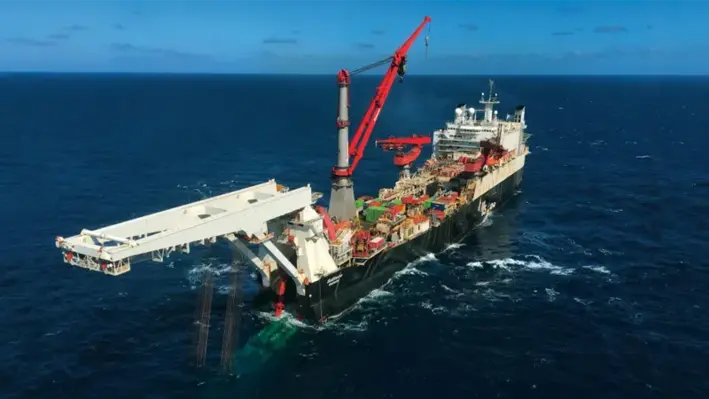 In a strategic move to strengthen the energy export network of the US Gulf of Mexico, Shell and Chevron have joined forces once again through their Amberjack Pipeline Company joint venture.
In a strategic move to strengthen the energy export network of the US Gulf of Mexico, Shell and Chevron have joined forces once again through their Amberjack Pipeline Company joint venture.
The partnership has awarded offshore contractor Allseas a major contract to install the Rome Pipeline, a 150-km, 24-inch trunk line designed to boost oil transport capacity from Shell’s Green Canyon 19 platform to the Louisiana coast.
This vital new link will expand Shell’s extensive Gulf of America pipeline system, enhancing export efficiency and operational flexibility across the region’s offshore network. The project underscores Shell and Chevron’s ongoing commitment to modernising and optimising oil transport infrastructure in one of the world’s most productive offshore basins.
Installation will be executed in two main phases. The nearshore section, scheduled for 2027, will be handled by Allseas’ automatically positioned anchor barge Sandpiper. Following that, the dynamically positioned pipelay vessel Solitaire—one of the most advanced ships of its kind will take on the deepwater installation in 2028. Together, these operations will form a critical artery within the Gulf’s subsea network, ensuring smooth and secure flow of hydrocarbons to shore.
The Rome Pipeline builds on the long-standing collaboration between Shell, Chevron, and Allseas, following the successful completion of previous ventures such as the Amberjack Debottleneck Project in 2016.
With an impressive record of more than 8,000 km of subsea pipelines safely installed in the US Gulf, Allseas continues to play a key role in shaping the region’s energy infrastructure. This new project not only reinforces its technical excellence but also represents a significant milestone in sustaining the Gulf’s vital oil and gas exports for years to come.
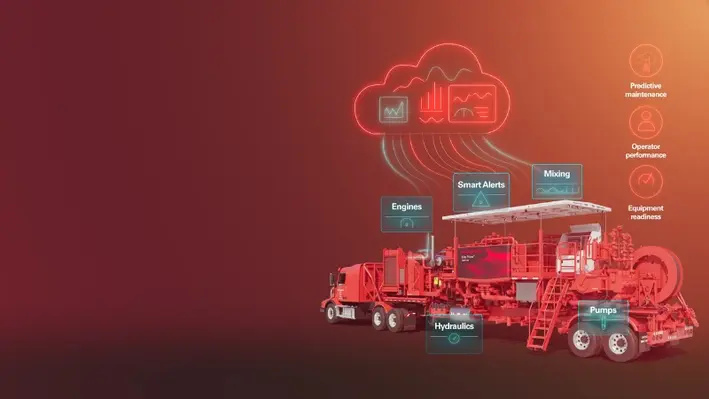

Halliburton has introduced LOGIX unit vitality, expanding its LOGIX automation and remote operations suite. The system provides real-time monitoring of cementing equipment, streamlines preparation for upcoming jobs, and offers direct insight into equipment performance and operation.
Daniel Casale, vice president of Cementing at Halliburton, said, "LOGIX unit vitality delivers unprecedented visibility into equipment health and operator performance. Artificial intelligence (AI) and real-time data transform equipment maintenance from reactive to predictive to help customers gain greater insight into their operations and reduce non-productive time."
The system links key cement unit components to intelligent controllers, tracking more than 400 real-time parameters to maintain optimal performance. Data is securely transmitted to the cloud, where machine learning models process it immediately, providing continuous insights into equipment health, operational readiness, operator performance, and predictive maintenance recommendations.
By combining AI with human expertise, LOGIX unit vitality enables smarter operations, faster responses, and more confident execution. The system supports Halliburton's land-based Elite and Elite Prime cement units, with offshore deployment planned for 2026.
Digital technology is central to Halliburton’s operations, shaping problem-solving and enhancing value for customers. The LOGIX automation and remote operations family delivers analytics and visualisation services that improve reliability, efficiency, and operational consistency, enabling safer operations, smarter decision-making, and lower total cost of ownership.
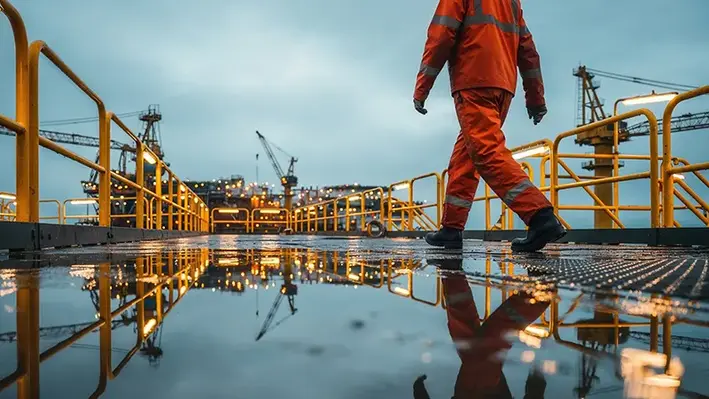
 The forward look for well services and interventions across the Asia Pacific market, and for other industry providers, bodes well as spending levels accelerate across the region.
The forward look for well services and interventions across the Asia Pacific market, and for other industry providers, bodes well as spending levels accelerate across the region.
In the latest insight paper by Westwood, offshore investment is expected to remain resilient despite a turbulent year for global oil markets.
Between 2025 and 2029, offshore engineering, procurement, construction and installation investment is projected to reach US$310bn globally, with APAC accounting for 27% of this spend, it notes.
Southeast Asia alone is set to award US$37bn in new offshore contracts, led by deepwater gas projects in Indonesia, and emerging carbon capture and storage (CCS) initiatives in Malaysia.
Thailand is also embarking on its maiden CCS scheme.
“Oil and gas companies – including regional NOCs – continue to prioritise decarbonisation, though the approach is evolving toward more disciplined oil and gas investment and cost efficiency,” Westwood notes in the paper.
“This shift is expected to drive down industry costs, even as supply chain margins remain under pressure.”
These macro trends are influencing not just oil and gas, but also the region’s growing offshore wind sector, it adds.
This could mean a weakening in rates for the offshore marine fleet that services the region’s oil and gas industry.
There are currently 84 active platform supply vessels and 449 anchor handling tug/supply vessels in the Asia Pacific region, operated by key incumbents such as Wintermar, HADUCO and Nam Cheong.
Dayrates for offshore support vessels have softened from recent record highs yet continue to exceed historical averages, according to Westwood, sustained by firm utilisation levels amid tightening supply as units are redeployed out of the region.
In its concluding remarks, Westwood notes that the Asia Pacific offshore market is navigating both challenges and opportunities as 2025 draws to a close.
From ageing fleets and cost pressures to the promise of offshore wind and deepwater gas, the region is poised to play a key role in the global energy transition, it adds.
As Asia Pacific continues to evolve, Westwood notes that staying informed and engaged will be key for all stakeholders across the energy value chain.
“As frameworks evolve and investment flows shift, collaboration between operators, service providers and governments will be essential to unlocking sustainable growth,” it states.
“Innovation in technology, financing and project execution will define the next chapter of offshore energy.”
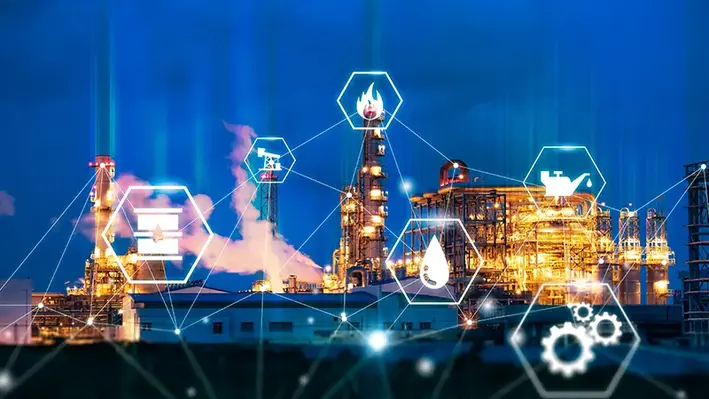
 With an aim to advance optimal and sustainable energy supply, PETRONAS, through Malaysia Petroleum Management (MPM), has signed several Memoranda of Understanding (MoUs) at ADIPEC 2025.
With an aim to advance optimal and sustainable energy supply, PETRONAS, through Malaysia Petroleum Management (MPM), has signed several Memoranda of Understanding (MoUs) at ADIPEC 2025.
In the spirit of global collaboration and technology driven innovation, the MoUs include partners such as SLB, Beicip-Franlab, ConocoPhillips, Eliis, PTTEP, Microsoft, Shell, and TotalEnergies. The partnerships will drive seismic imaging and artificial intelligence (AI) and machine learning (ML) development enabled by high-performance computing (HPC).
Senior Vice President of MPM, Datuk Ir. Bacho Pilong, said, “Partnerships like these are essential in advancing Malaysia’s upstream landscape. By combining the strengths of energy operators and technology innovators we are not only strengthening our exploration and development capabilities but also setting the foundation for a more efficient and resilient Malaysia upstream sector."
The partners will work together to leverage dynamic modelling and agentic artificial intelligence (AI) for real-time data integration, uninterrupted predictive analysis, and proactive decision-making. With the deployment of Normally Unattended Facilities and Remote Autonomous Operations (NUF-RAO), partners can reap benefits right from subsurface evaluation to offshore facility optimisation.
These advancements will also support more efficient technical evaluations and investment decisions. These collaborations fit perfectly with MPM's managerial role in ensuring the best petroleum arrangements and drawing high-value upstream investments.
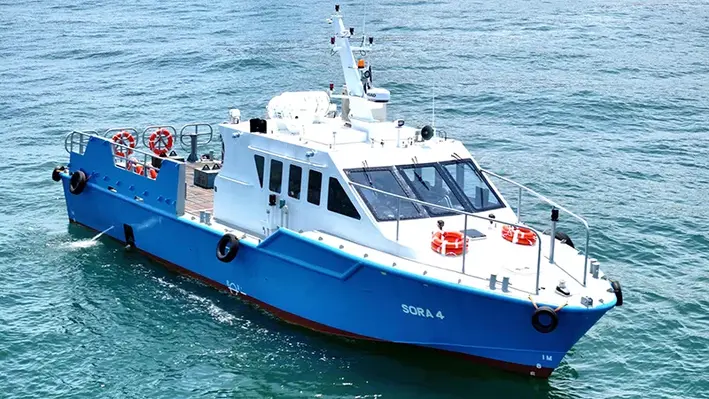
 Sora Marine Services has expanded its operations with the addition of a new 24-passenger aluminium crewboat, Sora 22.
Sora Marine Services has expanded its operations with the addition of a new 24-passenger aluminium crewboat, Sora 22.
The vessel, designed for efficiency and durability, will serve the country’s thriving offshore oil and gas industry, transporting personnel and cargo to platforms across Qatari waters.
Built by Lita Ocean in Singapore and designed by Jenjosh Marine Design, Sora 22 is engineered for performance and reliability. The vessel measures 24 m in length, with a beam of nearly 3 metres and a breadth of 6 metres, offering both agility and stability in challenging marine conditions. Constructed to Bureau Veritas standards, the lightweight aluminium hull ensures optimal speed and fuel efficiency vital for offshore logistics.
Powered by two Yanmar 6AYM-WET(M) four-stroke diesel engines, each delivering 610 kW at 1,900 rpm, Sora 22 achieves a maximum speed of 18 knots and cruises comfortably at 16 knots. The propulsion system, featuring twin screw propellers driven through marine gearing, ensures dependable performance for daily offshore operations.
Based in Doha, Sora Marine Services is a 100% Qatari-owned company providing a wide range of marine solutions from crew transfer and logistics to nearshore dive support.
With the introduction of Sora 22, the company reinforces its commitment to supporting Qatar’s energy ambitions, combining local expertise with world-class engineering to deliver safe, reliable, and efficient offshore transport.
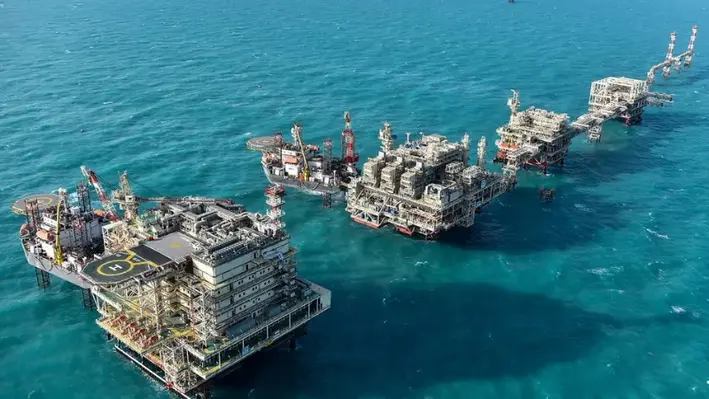

NMDC Energy, a leading provider of engineering, procurement, and construction (EPC) services for offshore and onshore energy clients, has signed a strategic Memorandum of Understanding (MoU) with Baker Hughes in Saudi Arabia.
The partnership aims to enhance localisation of Baker Hughes’ key products and solutions in the Kingdom's offshore energy sector, supporting markets across the Middle East, North Africa, Turkey, and India (MENATI).
Leveraging NMDC Energy’s advanced facilities, particularly its yards in Saudi Arabia, the collaboration will focus on offshore products and services to meet the growing needs of the offshore market. Planned initiatives include an Emergency Pipeline Repair System (EPRS) project and the establishment of a logistics base to support flexible pipeline systems across the Kingdom and the wider MENATI region.
This agreement follows a separate MoU between NMDC Energy and Baker Hughes covering gas technology products. The company has recently strengthened partnerships with several regional and international firms during ADIPEC in Abu Dhabi, reinforcing its position as a leading EPC service provider in the energy sector.
Earlier this year, NMDC Energy inaugurated its state-of-the-art fabrication yard in Ras Al Khair, Saudi Arabia. Located within the Ras Al-Khair Special Economic Zone, the 400,000 sq m facility has an annual production capacity of 40,000 tons and integrates automation and digital systems to deliver comprehensive fabrication, rigging, maintenance, and modularisation services for large-scale energy infrastructure projects.
Eng. Ahmed Al Dhaheri, chief executive officer of NMDC Energy, said, “NMDC Energy’s fabrication capabilities have drawn global players, particularly leading entities such as Baker Hughes, who share our vision of finding synergies that meet the evolving energy sector demands in the Kingdom and the wider MENATI region. As a strategic enabler of Saudi Arabia’s energy sector through global partnerships, NMDC Energy is committed to finding new pathways towards increased localisation in the Kingdom, supporting economic growth, job creation, and diversification.”

 ADNOC has unveiled its AI-powered Production System Optimisation (AiPSO) platform, marking a new era of data-driven efficiency in upstream operations.
ADNOC has unveiled its AI-powered Production System Optimisation (AiPSO) platform, marking a new era of data-driven efficiency in upstream operations.
The technology, initially rolled out across eight fields, cements ADNOC’s ambition to become the world’s most AI-enabled energy company, setting a new benchmark for innovation in oil and gas productivity.
Developed in collaboration with SLB, the AiPSO platform is powered by SLB’s Lumi data and AI platform and enhanced with Cognite Data Fusion. The system harnesses millions of real-time data points, artificial intelligence, and ADNOC’s proprietary machine learning models to proactively monitor, analyse, and optimise the performance of thousands of wells and hundreds of processing facilities.
Through this integration of advanced digital intelligence, AiPSO transforms how engineers interact with production systems—reducing diagnosis and optimisation time from days to mere minutes. By connecting field and office operations in real time, the platform enables smarter, faster, and more collaborative decision-making, ultimately boosting well productivity and workforce efficiency.
Musabbeh Al Kaabi, ADNOC Upstream CEO, said, “AiPSO will transform the productivity of our upstream operations as we work to become the most AI-enabled energy company. This industry-leading solution will support our strategy to increase production capacity while significantly enhancing the productivity of our people by freeing them to pursue value-adding opportunities and completing complex tasks up to ten times faster.”
Following its successful pilot, ADNOC plans to deploy AiPSO across all onshore and offshore fields by 2027, expanding its AI-driven transformation throughout the entire production chain.
Olivier Le Peuch, SLB CEO, added, “The AiPSO platform is an example of SLB’s ambition to combine artificial intelligence and domain expertise to drive improvements in production and recovery. We are proud to continue our collaboration with ADNOC to jointly deliver advanced digital and AI solutions that drive long-term value and operational resilience for ADNOC both today and tomorrow.”
AiPSO also complements ENERGYai, the first agentic AI solution co-developed by ADNOC and AIQ, showcasing the company’s cohesive AI strategy aimed at enhancing safety, efficiency, and sustainability across operations.
This announcement reinforces SLB’s growing AI ecosystem, following the recent launch of its Tela agentic-AI assistant, its collaboration with AIQ to advance ENERGYai, and last year’s introduction of the Lumi data and AI platform.
Together, ADNOC and SLB are not just optimising production - they are redefining the future of intelligent energy systems, where data and AI converge to power smarter, faster, and more sustainable operations.
Page 3 of 109